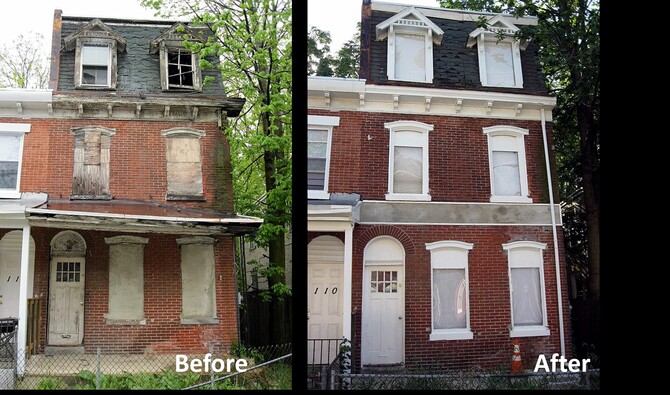Remediating Abandoned, Inner City Buildings Reduces Crime and Violence in Surrounding Areas, Penn Study Finds
Fixing up abandoned buildings in the inner city doesn’t just eliminate eyesores, it can also significantly reduce crime and violence, including gun assaults, researchers from the University of Pennsylvania and Penn’s Perelman School of Medicine report in the first study to demonstrate the direct impact of building remediation efforts on crime. The findings were published this week in the journal PLOS ONE.
The research team, which included Michelle Kondo, PhD, a former research fellow at the Perelman School of Medicine now a scientist with the USDA Northern Research Station, John MacDonald, PhD, a professor of criminology at Penn, and Charles Branas, PhD, a professor of epidemiology at the Perelman School of Medicine, found a significant decrease in serious and nuisance crimes in areas around remediated buildings after Philadelphia began enforcing an ordinance requiring owners of abandoned buildings to improve their facades and install working doors and windows in 2011. The most significant reduction (down by 39 percent) occurred for gun assaults around remediated buildings in the year following improvements.
“Replacing broken windows and doors is an effective deterrent of crime—and a low-cost alternative to demolishing abandoned buildings,” MacDonald said. “During a time when big cities like Philadelphia are looking to tackle issues of crime and violence, this study points to a potentially effective tactic for municipalities to continue or implement in helping make their neighborhoods safer and ultimately improving health outcomes.”
Prior research suggests that vacant and abandoned places have a significant and negative impact on community health and safety. The “broken windows” theory proposes that abandonment sends a signal to would-be offenders that committing crimes is acceptable and will likely go unchallenged or unseen. A sister study of abandoned land, not buildings, conducted by Branas, MacDonald and others in 2011 found an association between greening remediation of vacant lots and reduced risks of neighborhood violence, stress, and sedentary behavior. Other studies have found associations between boarded-up buildings and drug-related deaths and sexually transmitted diseases.
Click here to view the full release.








